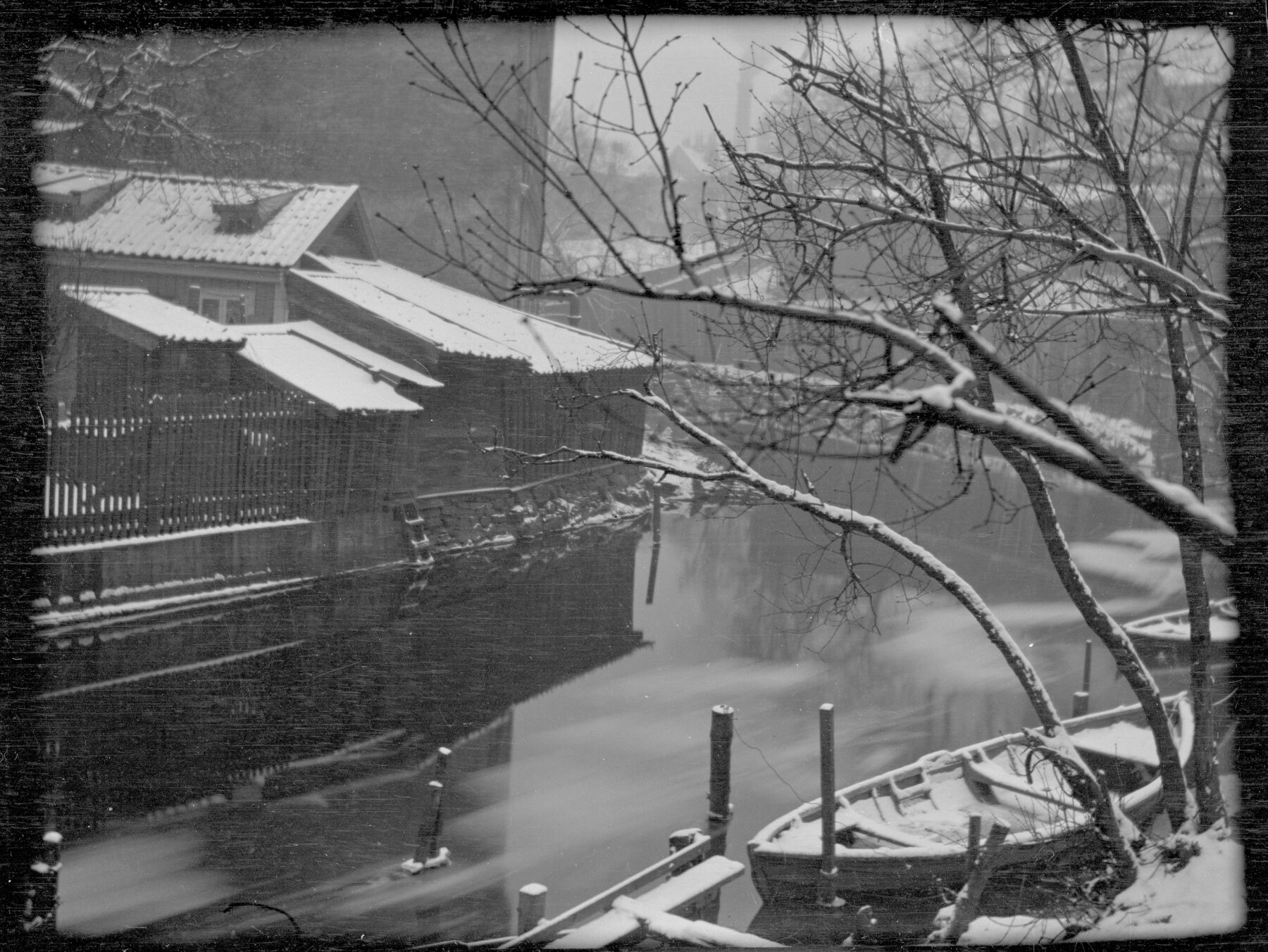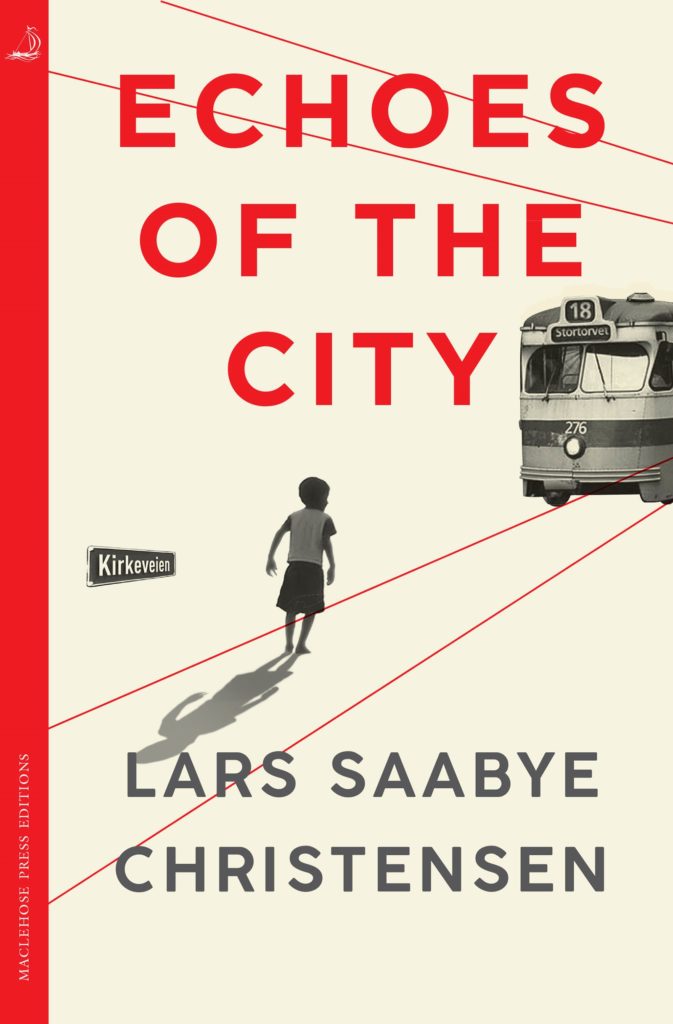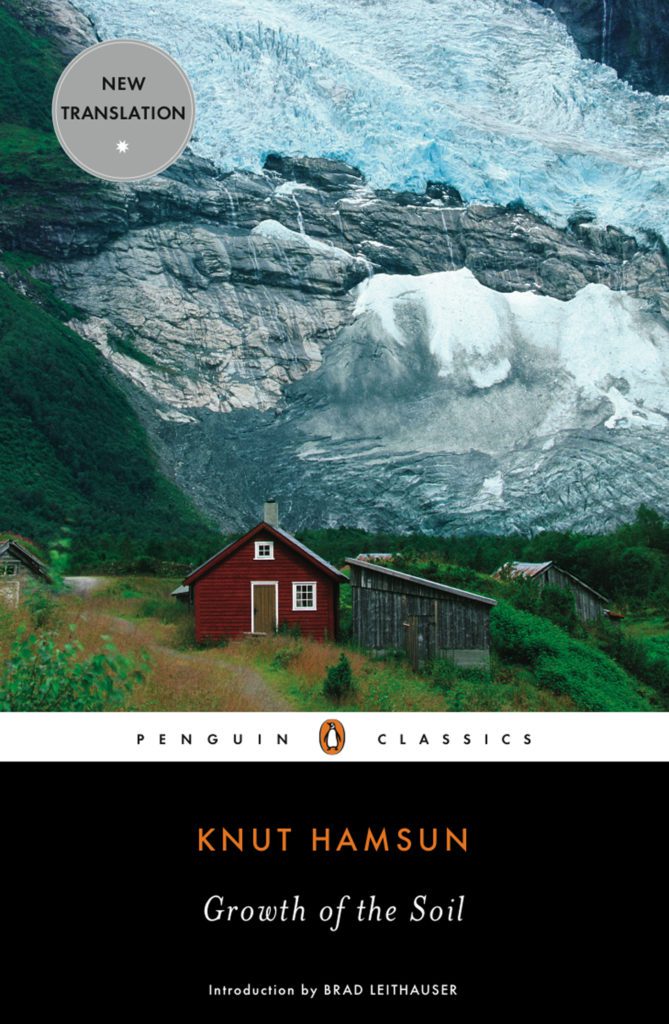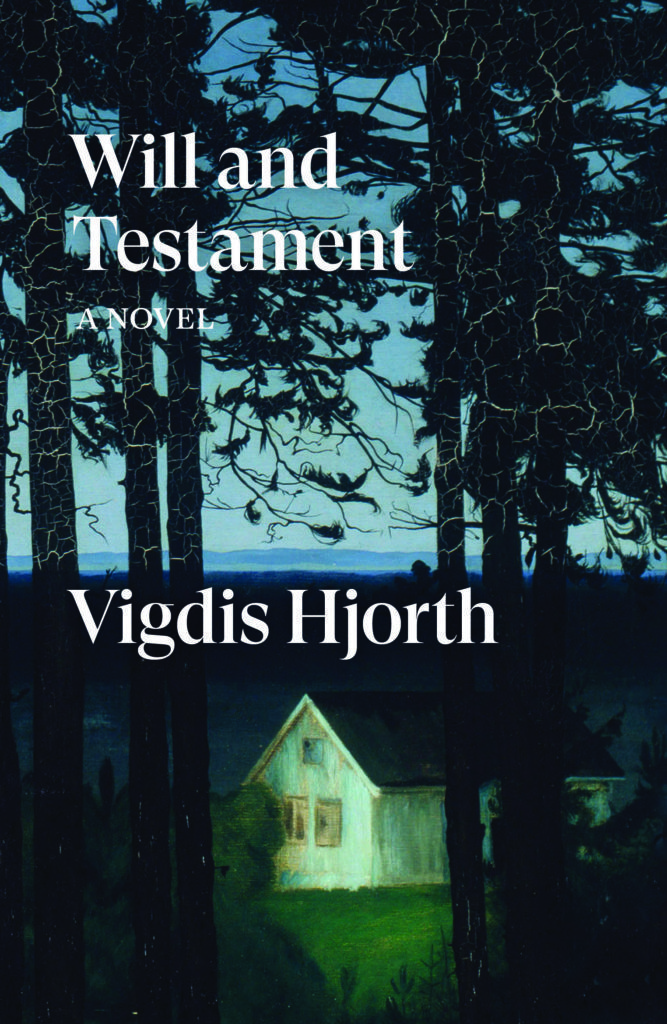New novels by Lars Saabye Christensen and Vigdis Hjorth, now published in translation, highlight how Norwegian authors have long been torn between the conflicting terrains of city and country. Boyd Tonkin takes a literary ramble from the forests to the factories to discover more.
In Lars Saabye Christensen’s latest novel Echoes of the City, Ewald Kristoffersen works for an Oslo design firm in the late 1940s as Norway’s capital slowly recovers from the hardships and insecurities of war and occupation. With his company commissioned to devise a branding strategy to celebrate the 900th anniversary of the city’s foundation, Ewald ponders the symbols and logos that might best convey all those “900 flipping years”. They will have to include Norway’s rulers, of course, “from Harold Hardråde to Haakon VII”. Not to mention such Oslo highlights as the “royal residence”, “textile factories along the river Akerselva”, even “Edvard Munch’s last will and testament” (which, in 1944, donated the artist’s works not to the Norwegian state – at that point still under German domination – but to the City of Oslo itself). Above all, Ewald thinks, “That means shipping and forestry”. “Of the city’s 453 square kilometres 320 are forest and yet more forest. Oslo is a forest.” And in this urban forest, dotted with settlements, live people who – as Christensen underlines throughout his novel – have only lately arrived in town: “Everyone in Oslo comes from the country”.
In acclaimed, and hugely popular, novels, such as Beatles and The Half Brother, Lars Saabye Christensen has mapped post-war Oslo with a rapt attention that restores each street and block to pulsating, densely coloured life. Echoes of the City, first of a planned trilogy and now brought adroitly into English by master-translator Don Bartlett, adds another chapter to his urban chronicles in an immersive group portrait of the Kristoffersen family and their neighbours in the Fagerborg district. In Fagerborg, however, even the most devoted townie feels the presence of the forest and the fjord that encircle the capital. Childhood memories of rural and coastal life still punctuate their dreams. As the new Oslo City Hall (inaugurated in 1950) rises on the waterfront, this great statement of modernity prompts mixed feelings among the citizens. Some people dub it a slab of “brown cheese”; Ewald’s country-bred father Alf complains about “junk that blocks a view of the fjord”.
The historians will tell you that a tension between city and country life has threaded through Norwegian society and culture at least since the time of the Eidsvoll constitutional assembly of 1814, which originally guaranteed two-thirds of parliamentary seats for rural constituencies. At first, urban interests came to be embodied in the iconic figure of the embetsmann: the elite official with his Danish ways (and speech), sworn enemy of the rooted, stalwart yeoman farmer, the bonde.
When Bjørnstjerne Bjørnson, the giant of Norwegian literature treated by his 19th-century compatriots as a walking, speaking embodiment of the country, published his first rustic tale Synnøve Solbakken in 1857, he wrote that he intended it as “a plea on behalf of the peasant”. The virtuous bonde needed defence, so the ruralists’ argument went, from the forces of bureaucracy, modernity, cosmopolitanism – and from the city, where all these new-fangled ills tended to congregate and breed.
Entire late 19th-century literary careers were built on the fault-lines of Norway’s rural-urban culture wars. The development of “New Norwegian” as a revived literary language, seen as closer to ancient forms of speech than the standard Danish-Norwegian idiom, gave a fresh linguistic edge to the rivalry between town and country attitudes and manners. Writers such as the prolific Hans Kinck explored the nation’s divisions in novels including Herman Ek and his vast trilogy The Avalanche Broke. Better-known abroad, Knut Hamsun could dissect city alienation and solitude in the extraordinary Hunger (1890) but, a few years later, also hymn the mysterious countryside of Nordland in Pan. The ageing Hamsun, author in 1917 of his “epic of the earth” Growth of the Soil, became a full-blown backwoodsman: a vehement critic of urban civilisation whose blood-and-soil raptures helped lure him into support for the Nazi occupation. The poet Tore Ørjasæter spoke for a host of other Norwegian voices when, in the early 20th century, he wrote that “To live on the farm/ son after father/ this is the best/ fate for a man”.
Yet any reader of Norwegian fiction now will be struck not so much by some unbridgeable chasm between the country and the city, but at the intimacy between them. If any still exists, the fault-line today seems to run not between characters but within them. Personal or family memories of farm, valley and coast remain a haunting presence amid the concrete canyons of the city, or the tamed no-mans-land of suburbia surrounded by forests and overlooked by mountains.
An author such as Per Pettersen can take us deep into memory-shadowed woods in a story such as Out Stealing Horses, while staying rooted in the working-class Oslo evoked in novels about his literary alter ego, Arvid Jensen. In Christensen’s Fagerborg, meanwhile, we meet country folk who have come to town and, even generations later, feel bound indissolubly to the empty and pristine spaces they have left. The Italian immigrant pianist Enzo Zanetti, one of the most touching characters in Echoes of the City, reflects on the difference between picture-postcards of his crowded homeland and the sort he finds in Norway: “In all this nature there is not one person… This country hasn’t been discovered yet.”
Of course, one principal way in which Norwegians keep an emotional stake in country and city alike is by their summer retreat to cabins far away – not in distance but in spirit – from the urban bustle. Vigdis Horth’s best-selling novel Will and Testament, which has just appeared in a compelling translation by Charlotte Barslund, seemingly turns on a family’s inheritance dispute over two summer houses in the Hvaler archipelago, south of Oslo near the Swedish border. “Seemingly”, because as Bergljot, estranged daughter of the clan, tells her story, we realise that behind this wrangle over real estate with her two younger sisters lie painful secrets that slowly come to light. Inch by inch, we grasp why she fears that in families “Sometimes you can’t make amends, sometimes the damage is past repair”.
No one who knows Ibsen’s plays – and both Hjorth’s and Christensen’s novels feature characters who played his heroines on stage – will be unaware that property quarrels can heat a latent family crisis towards boiling-point. So it is with Will and Testament. Those contested cabins come to symbolise a happiness and harmony that Bergljot – supposedly “the heartless daughter, selfish and destructive” – has never been allowed to share. We must read to the bitter, bruising end to find out why. The pair of modest huts become timber trophies in what Bergljot’s friend Klara calls “a battle to the death over honour and legacy”.
In Will and Testament, the potential savagery of existence lurks not on some storm-battered shore or snowbound mountainside, but in a comfortable home in the heart of bourgeois Oslo. Indeed, Bergljot finds interludes of respite from lacerating memories not in the city, but alone in her married lover’s cabin in the woods. There she can be swallowed into the winter solace of the “quiet, white forest”. This being modern Norway, the wholesome, healing qualities of nature reveal themselves not only on some family farm, or in the silent woods, but during her escapes abroad. Beside the sea in Croatia, Bergljot enters a pocket of serenity. She plans “to build a house of such moments in which I can seek refuge during hard times”. Even in the depths of family trauma, the scent of the forest, sea and meadow may still drift over the troubled cities and suburbs of Norwegian fiction. That forest may be a real place. It may also, as in Will and Testament, be a longed-for state of mind.
Echoes of the City by Lars Saabye Christensen, translated by Don Bartlett (MacLehose Press, £14.99)
Lars Saabye Christensen will be in conversation at the British Library on Monday 7 October 2019
Will and Testament by Vigdis Hjorth, translated by Charlotte Barslund (Verso, £10.99)
Vigdis Hjorth will be in conversation at the Southbank Centre on Saturday 26 October 2019
Top photo: Factories along the River Akerselva by Harald Sohlberg, 1910






